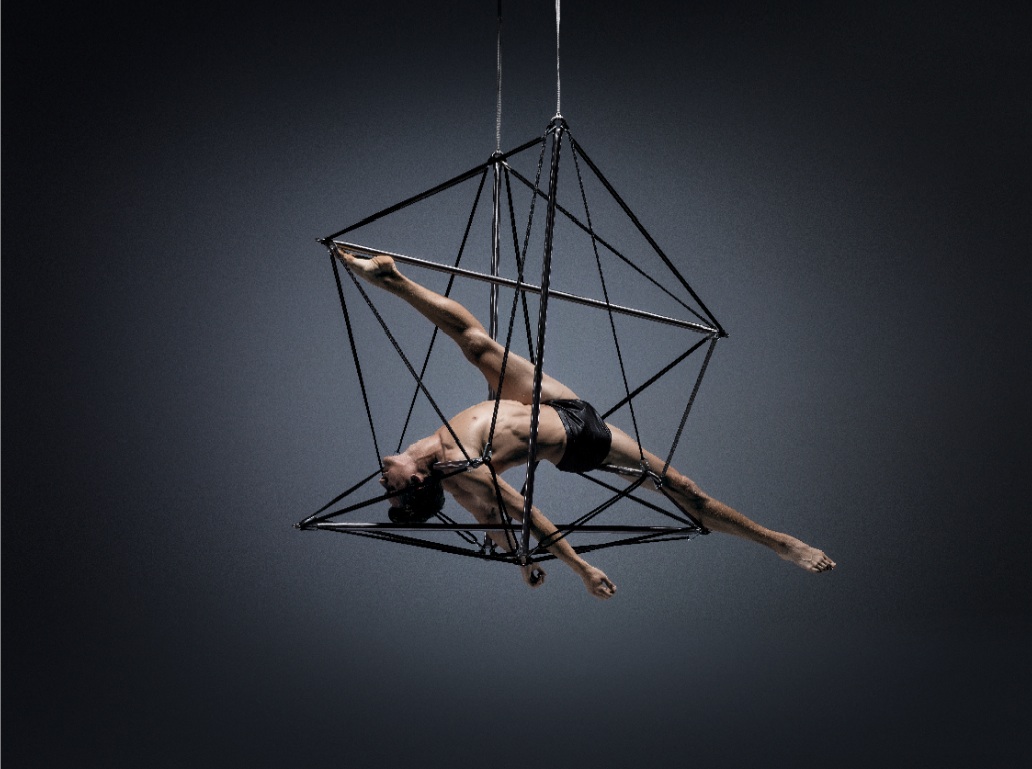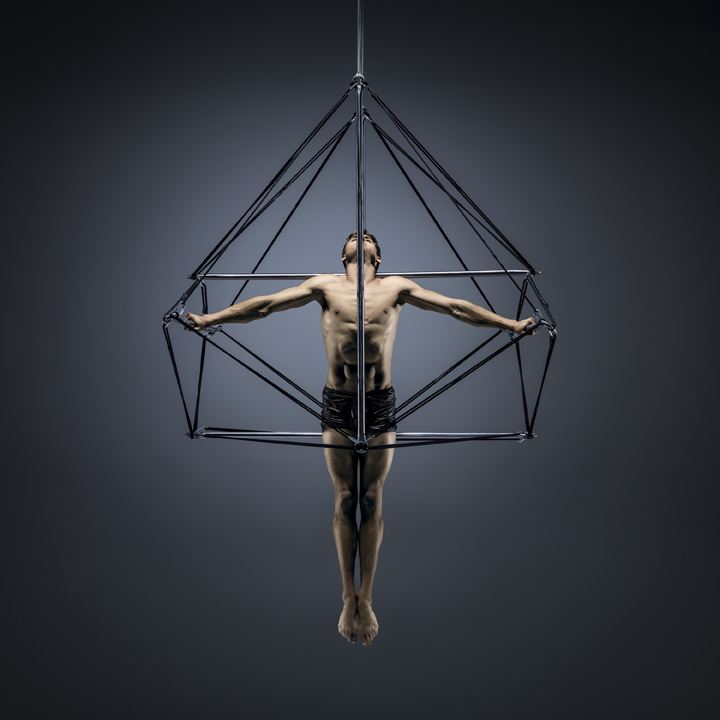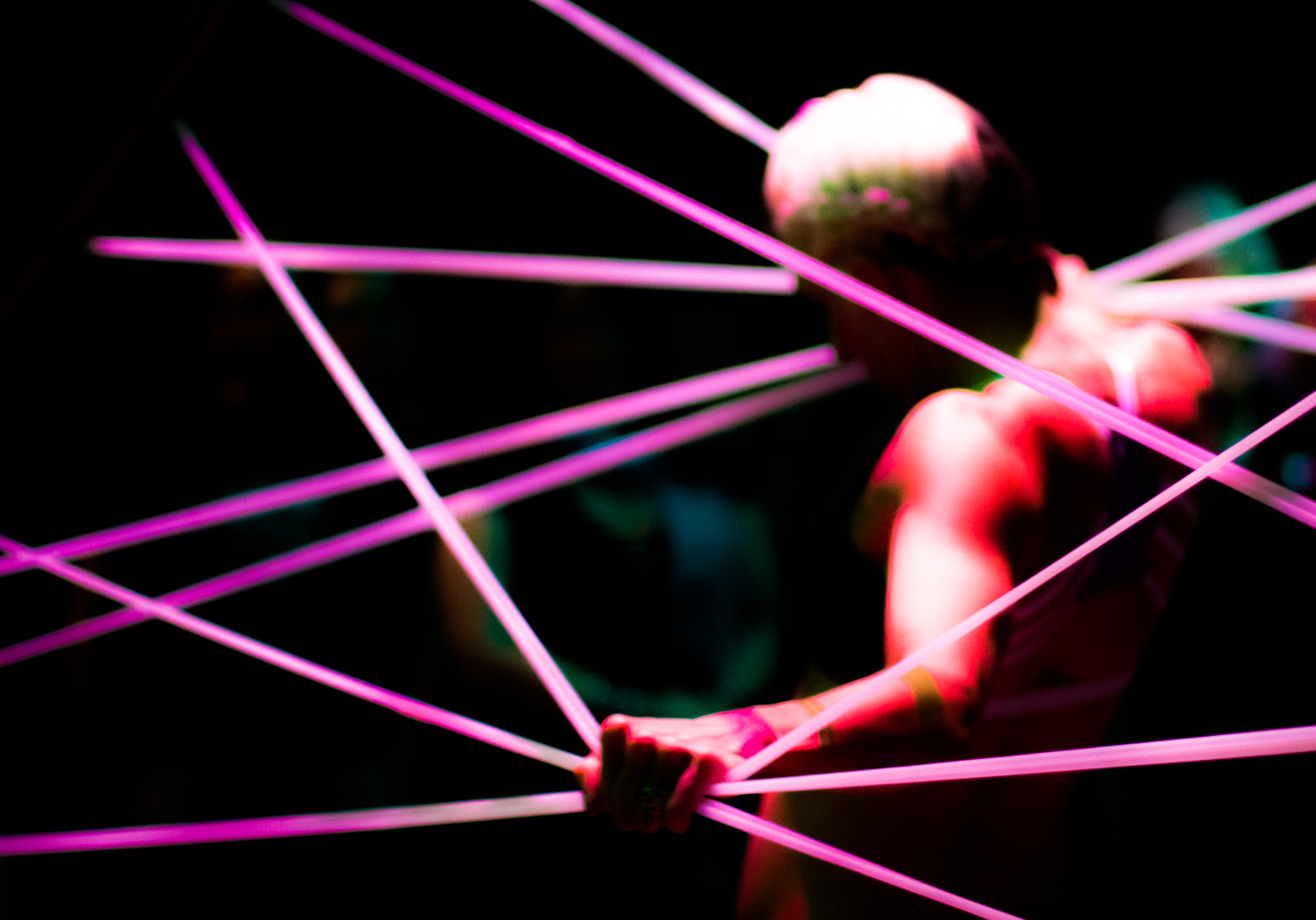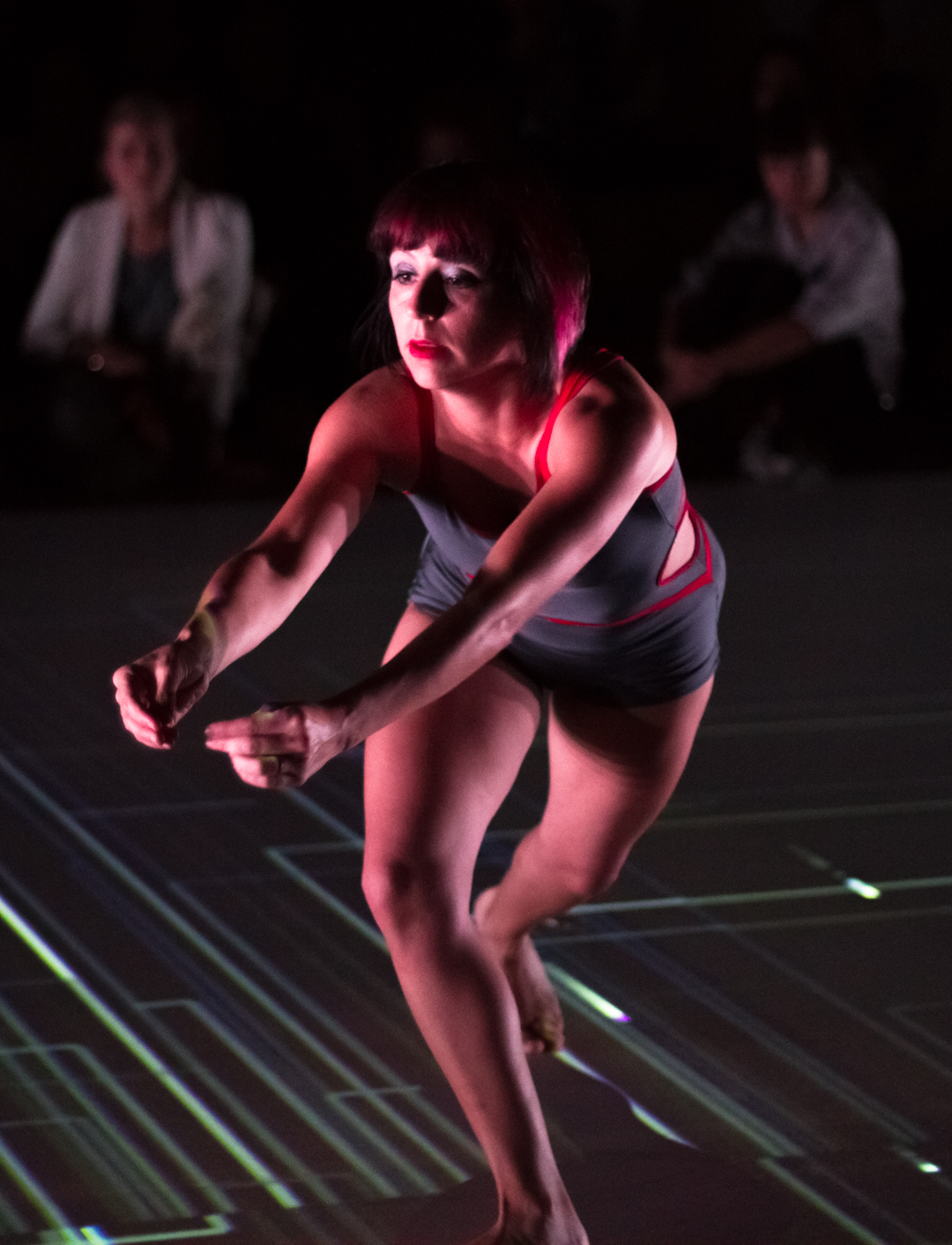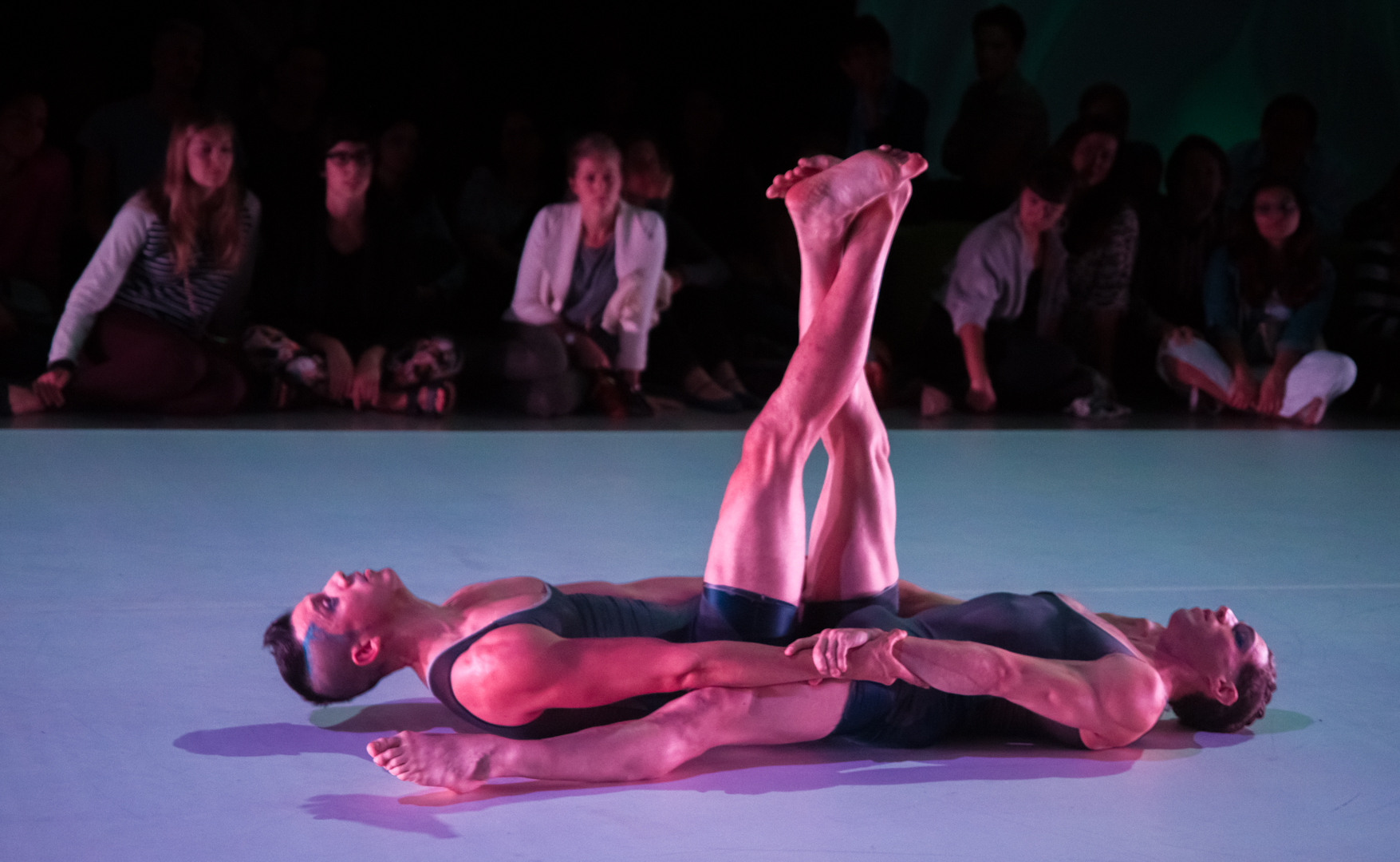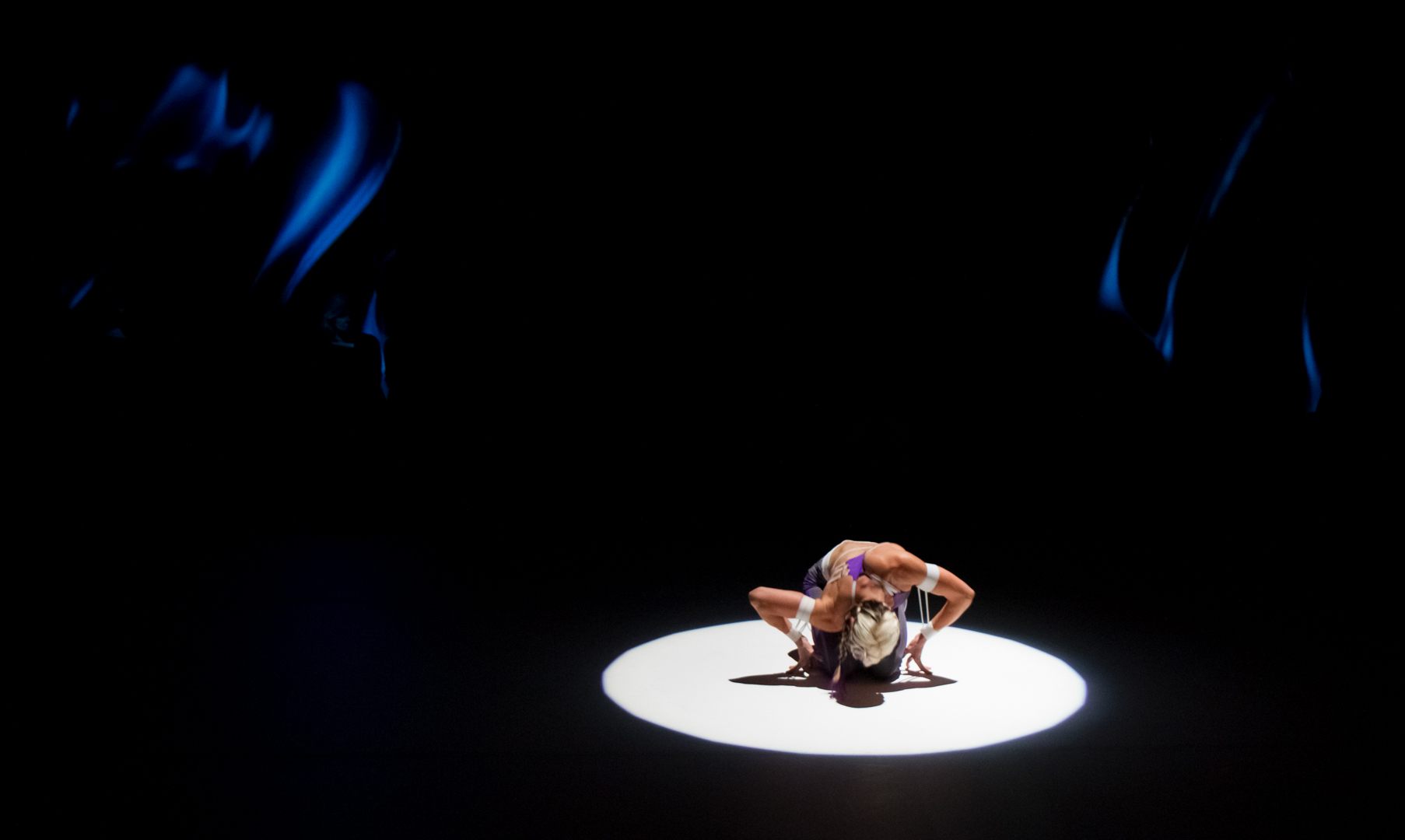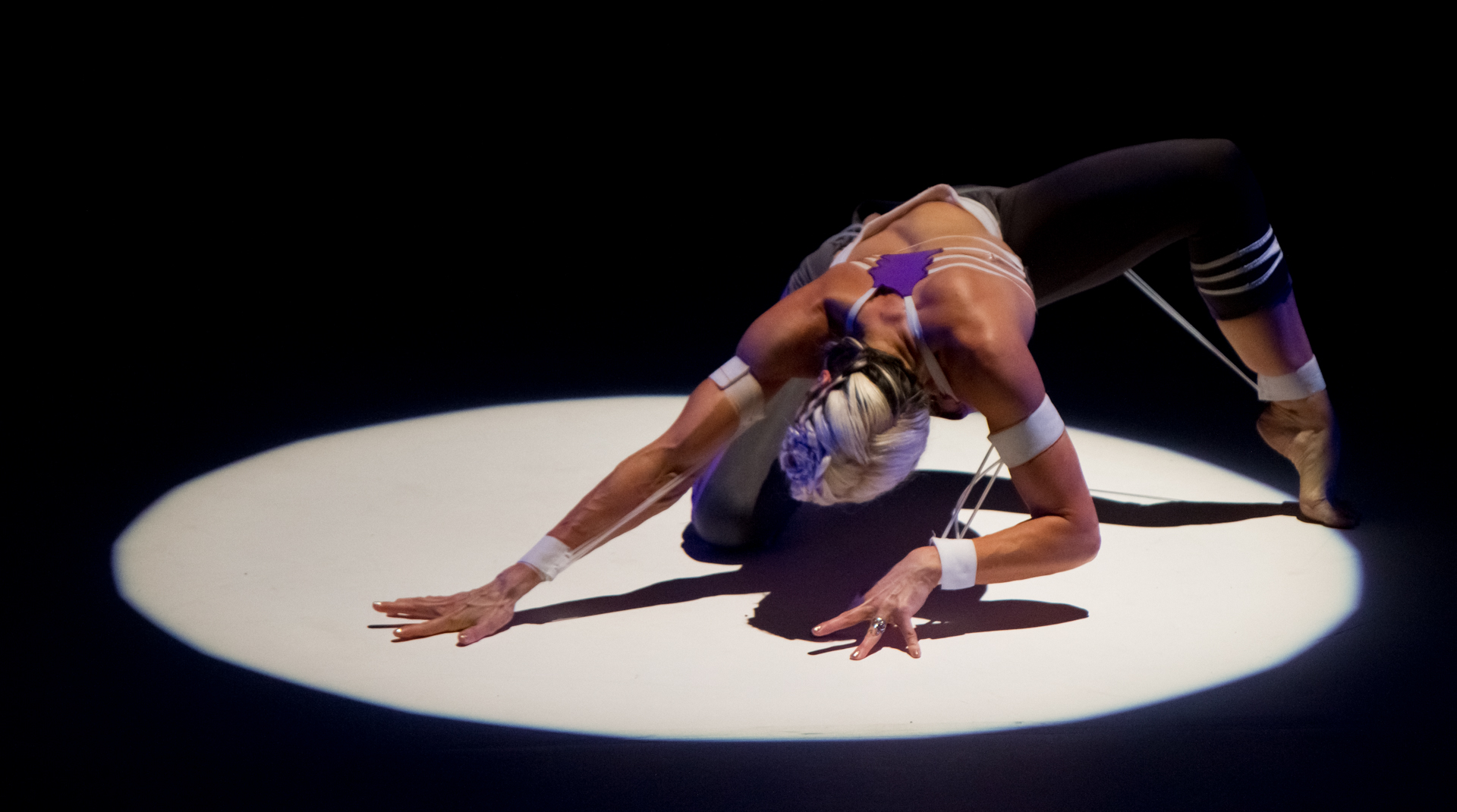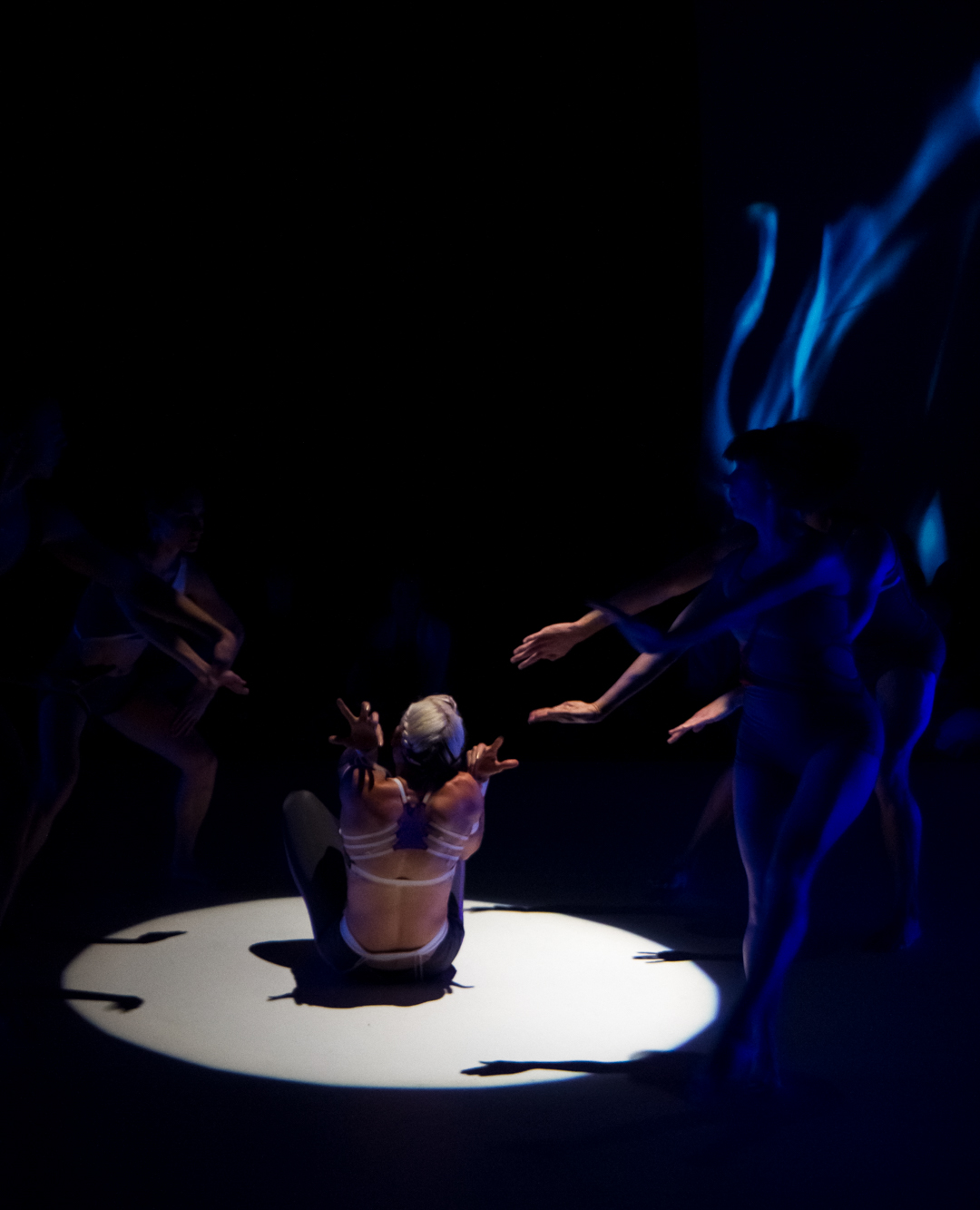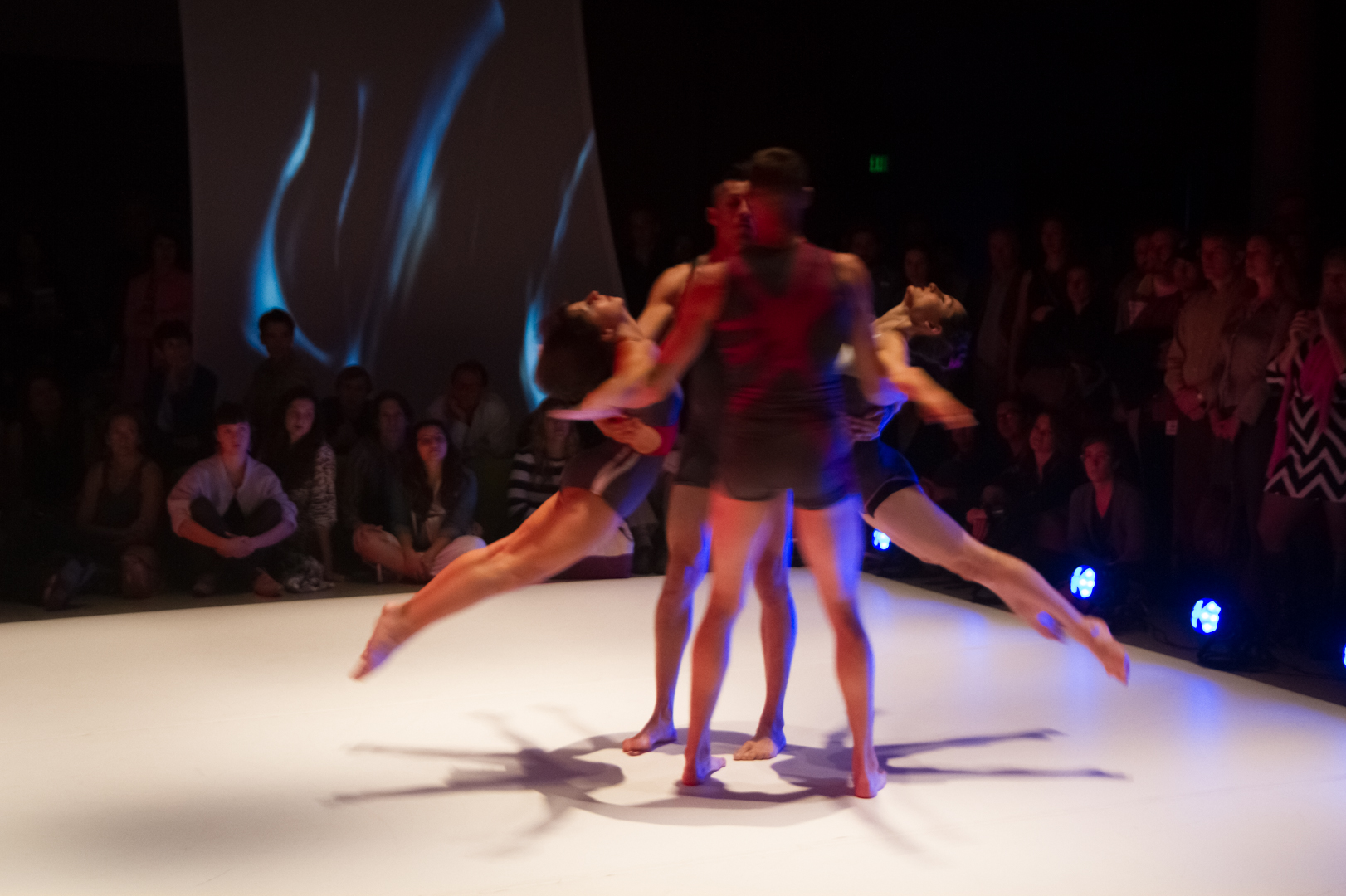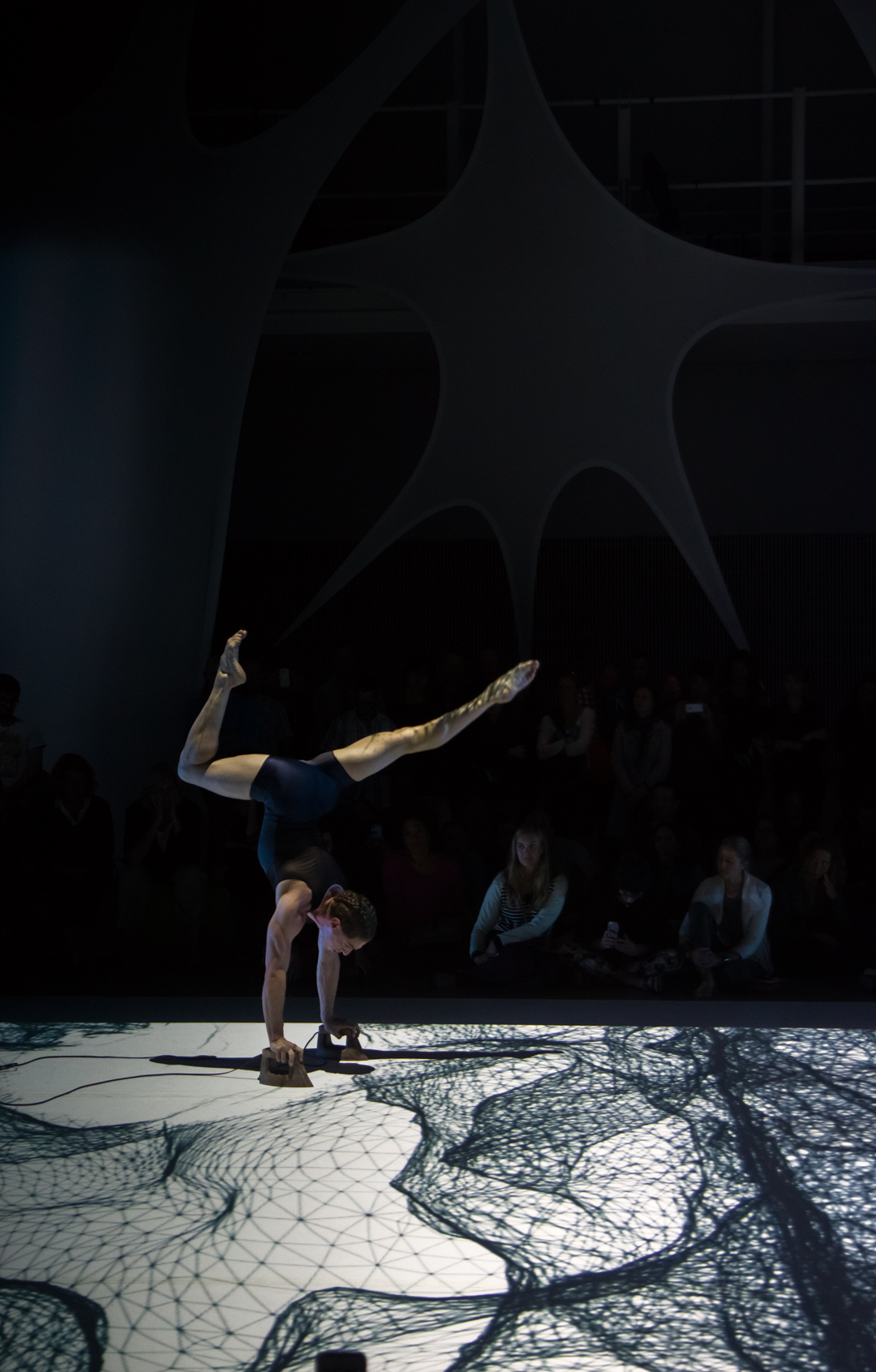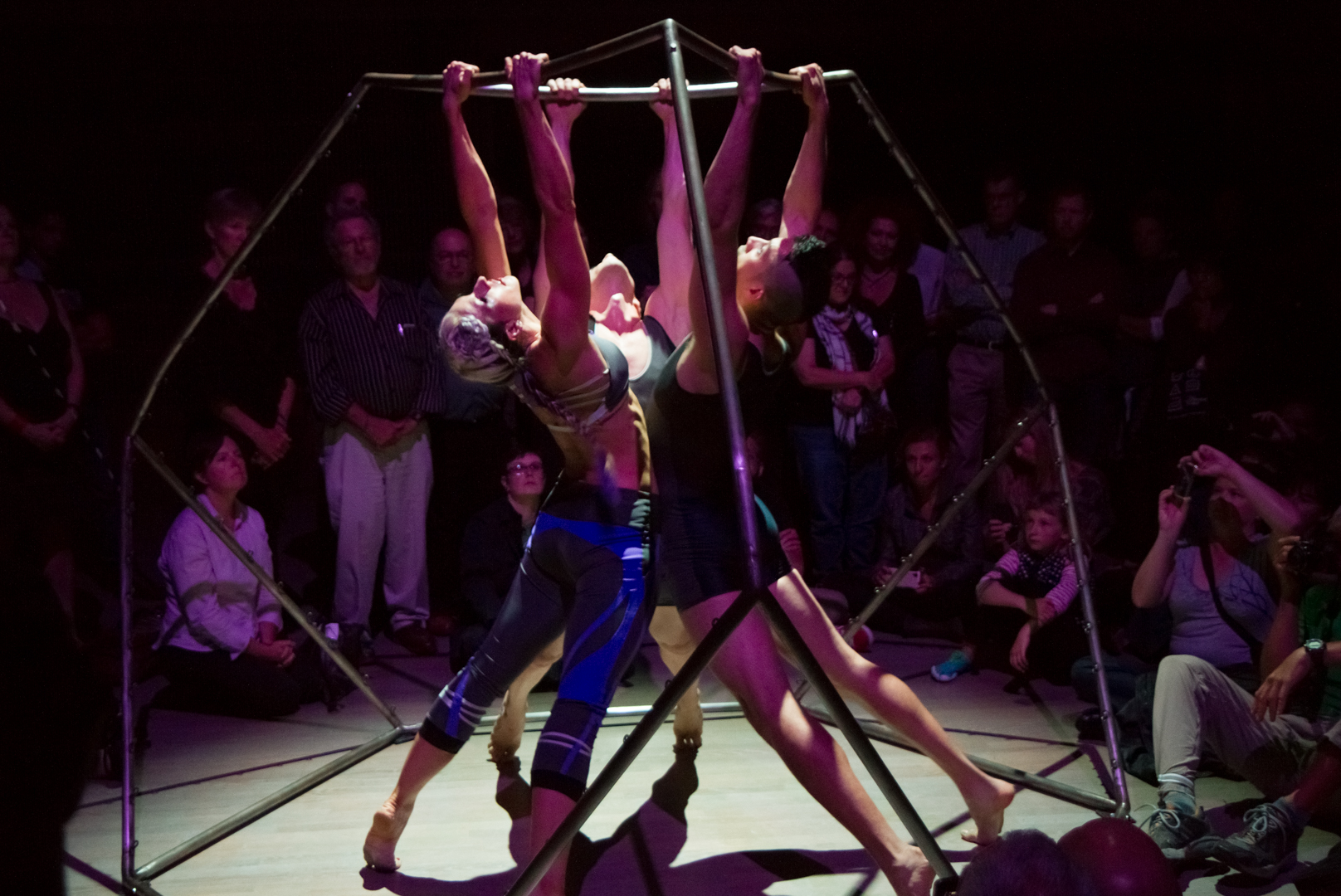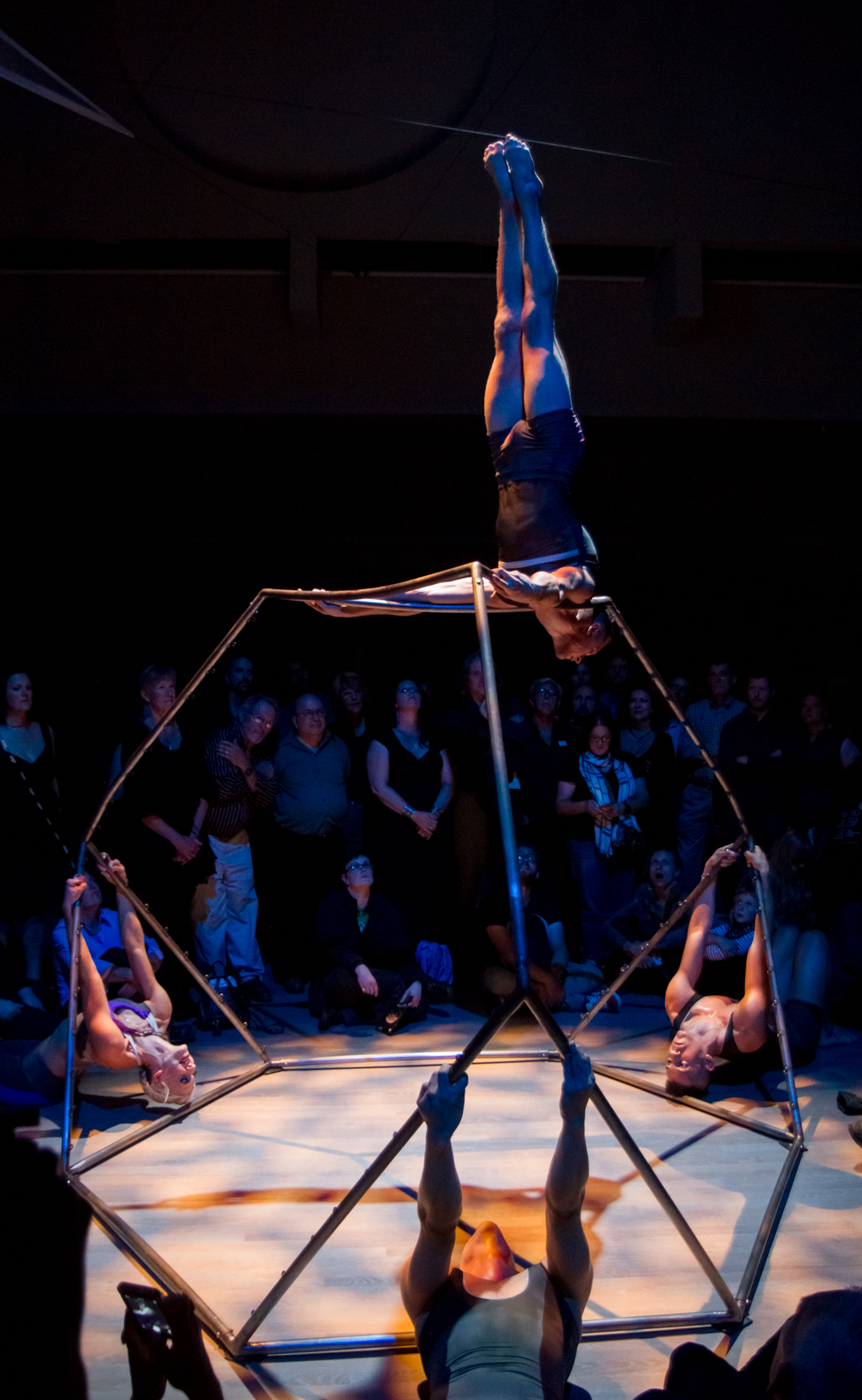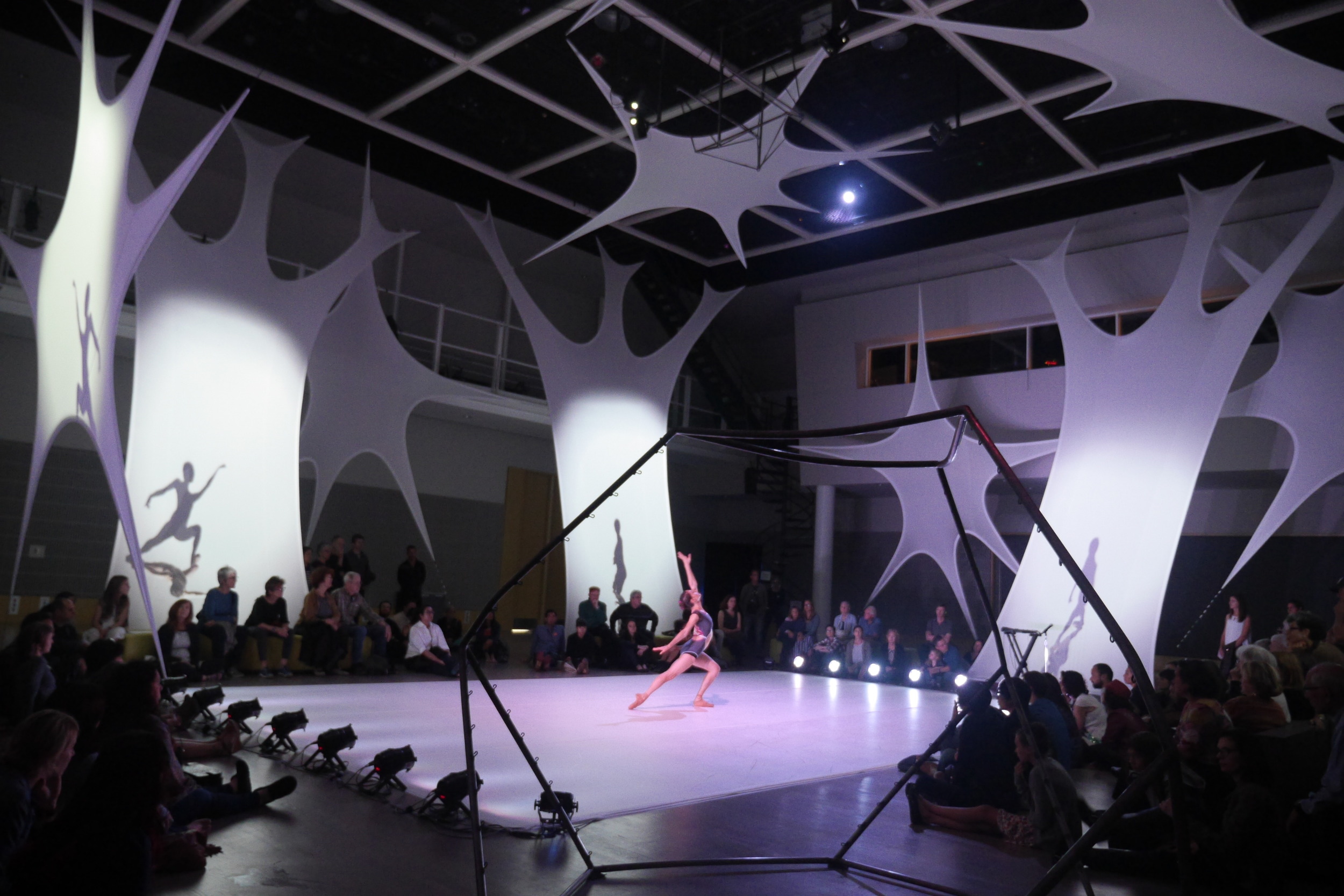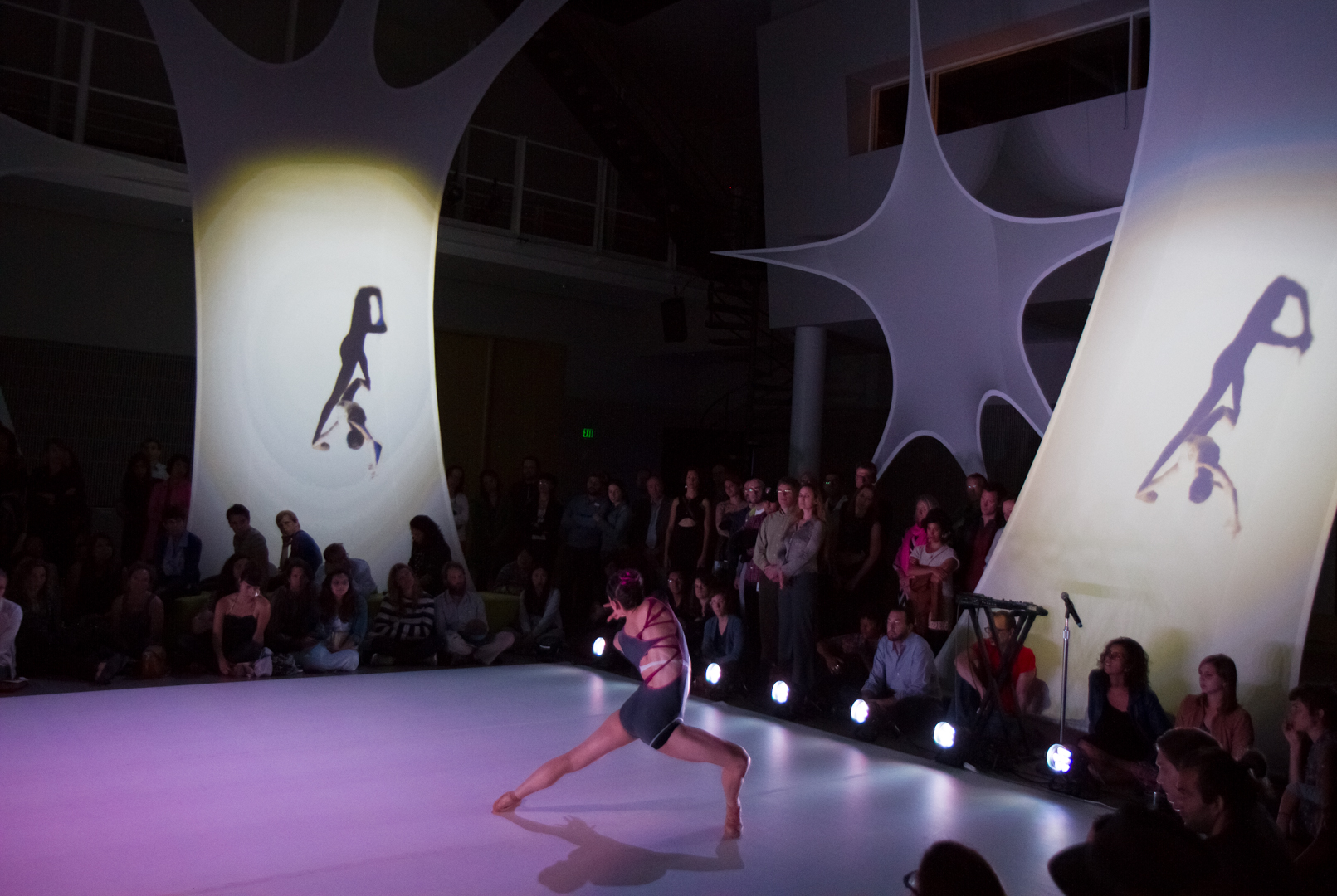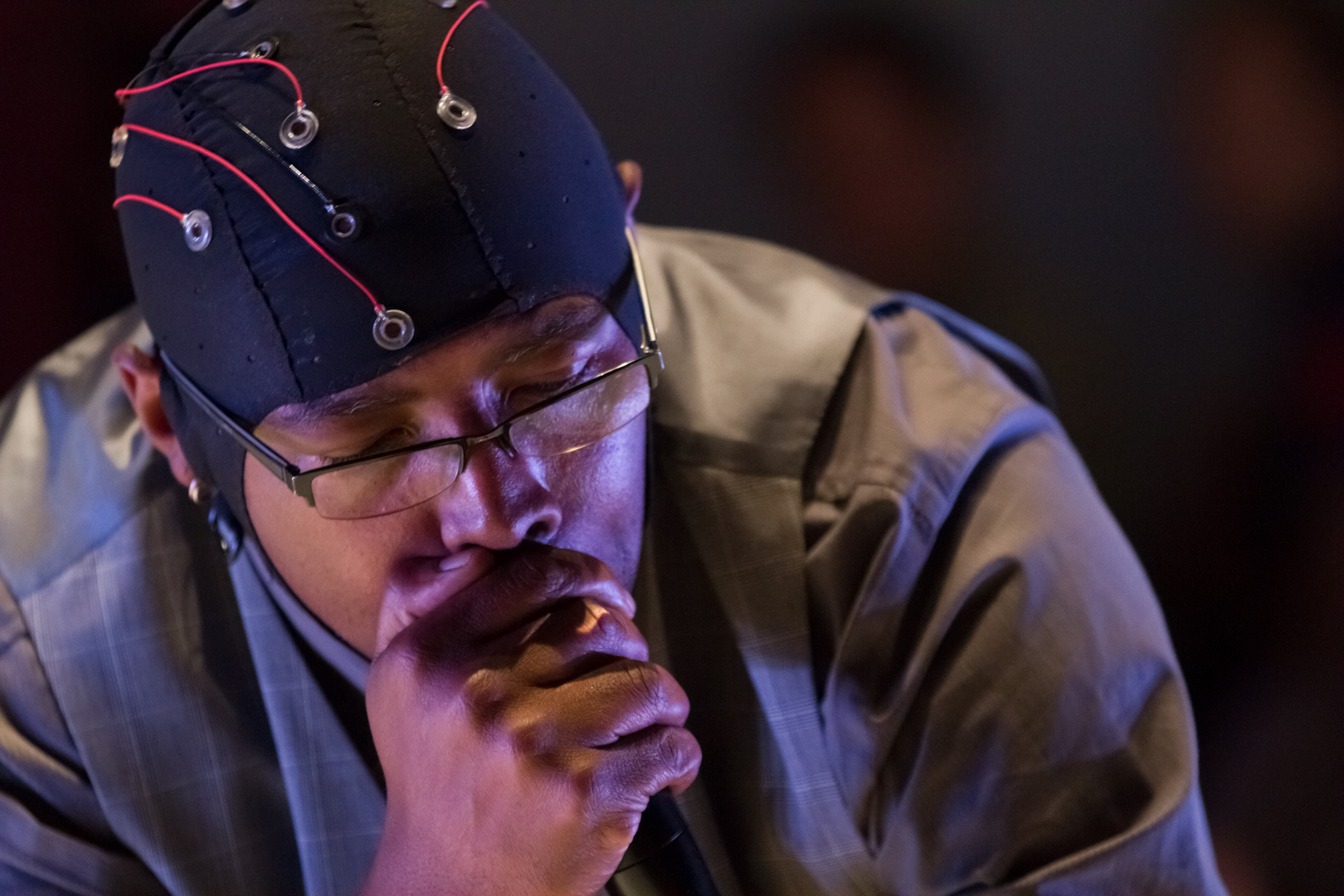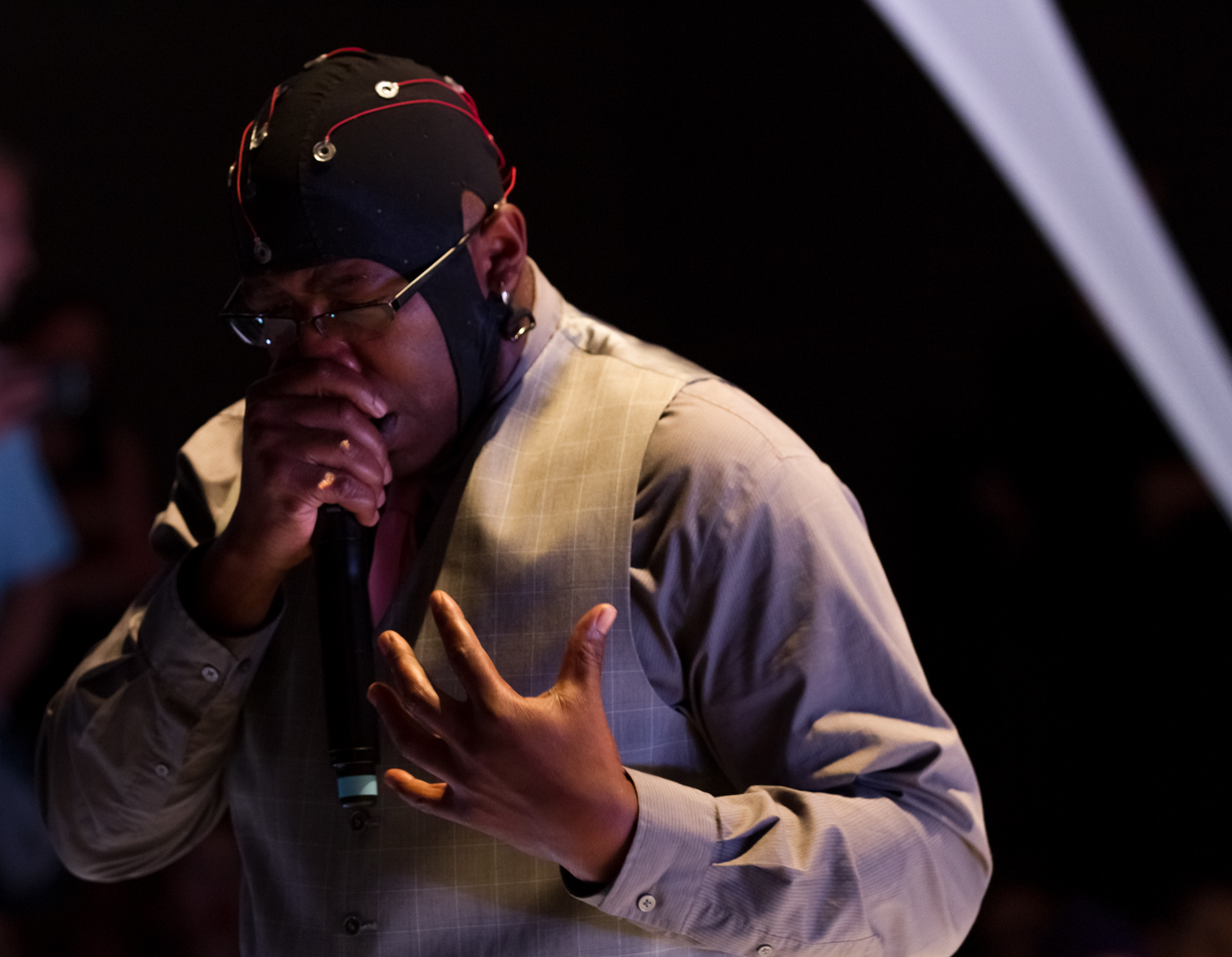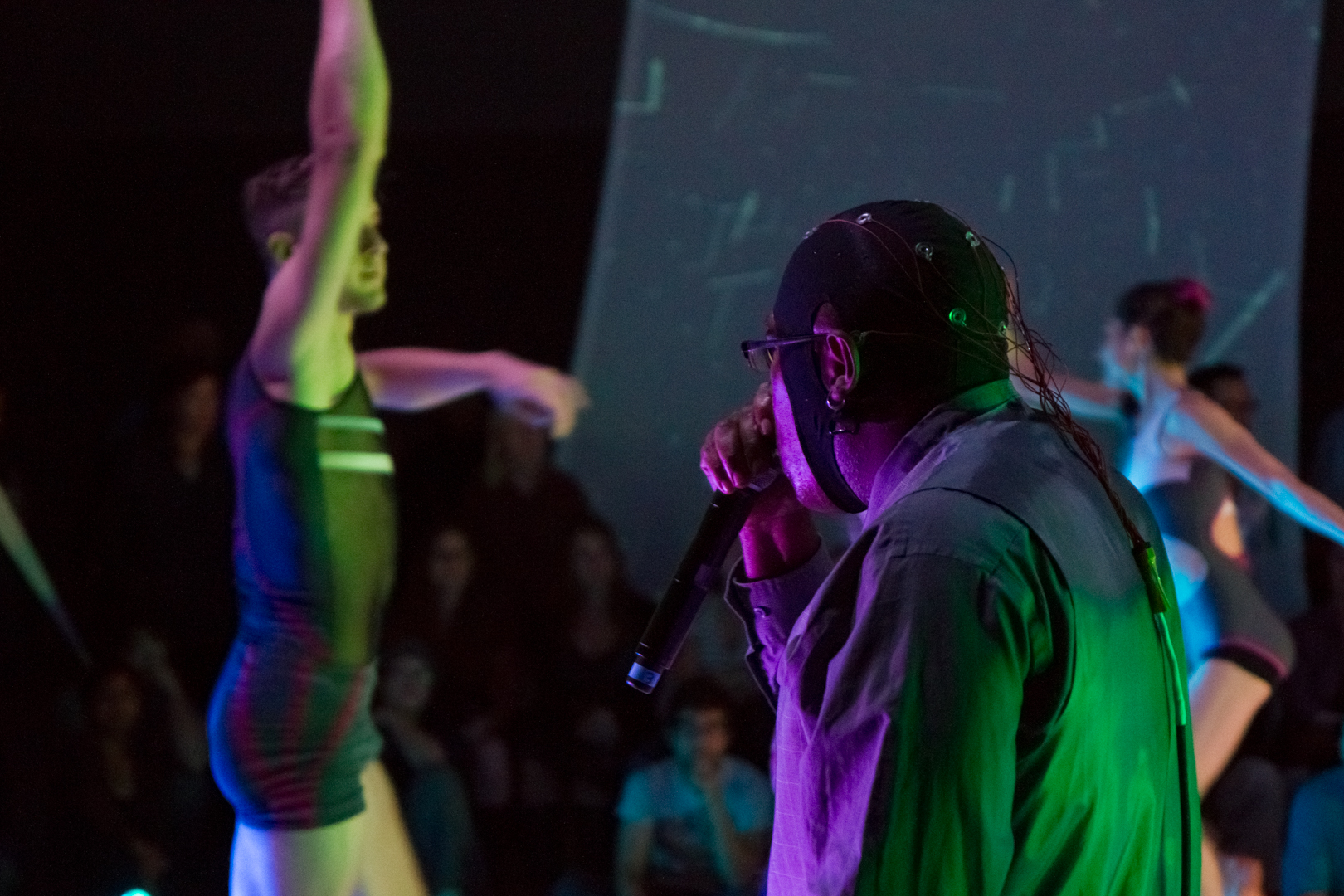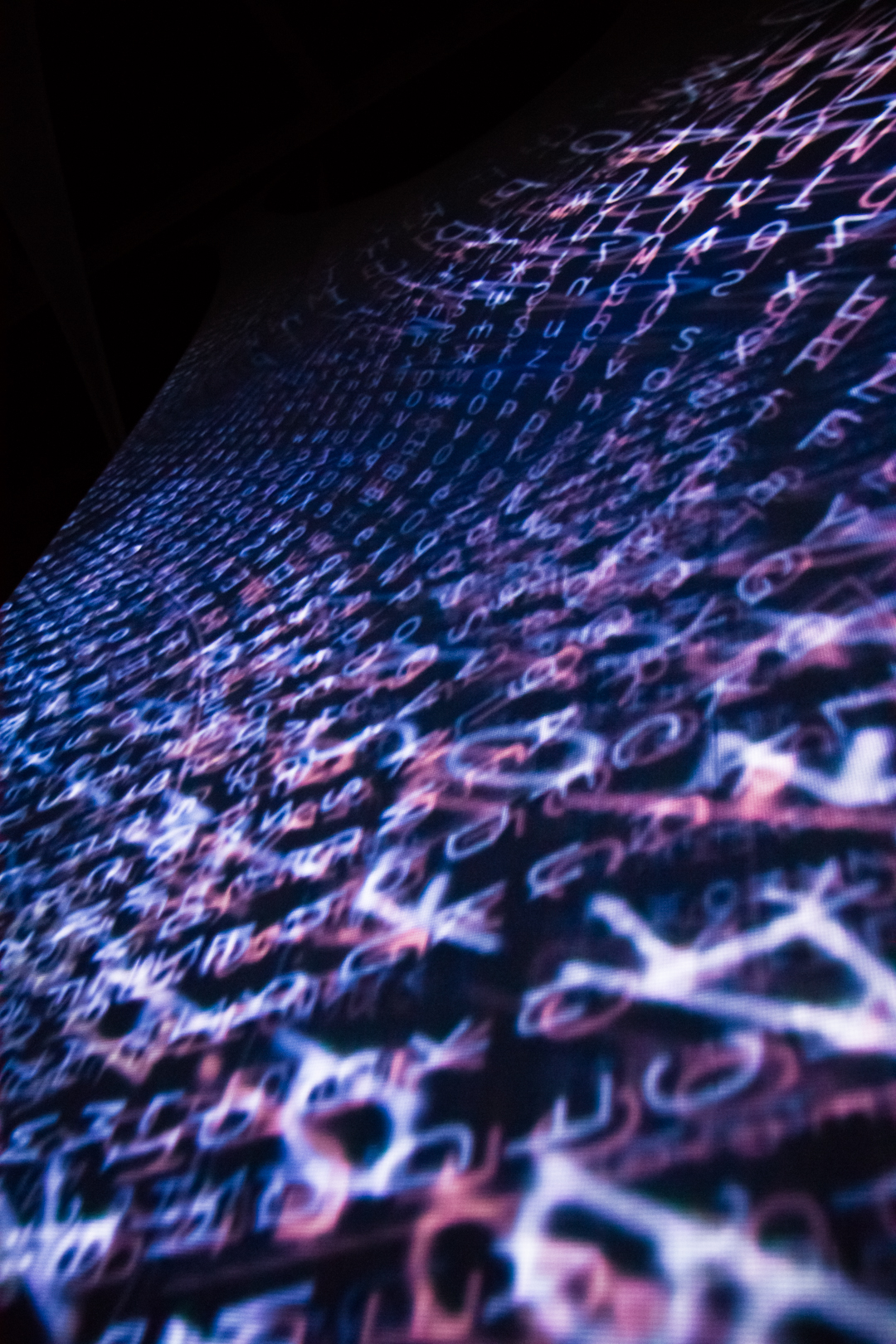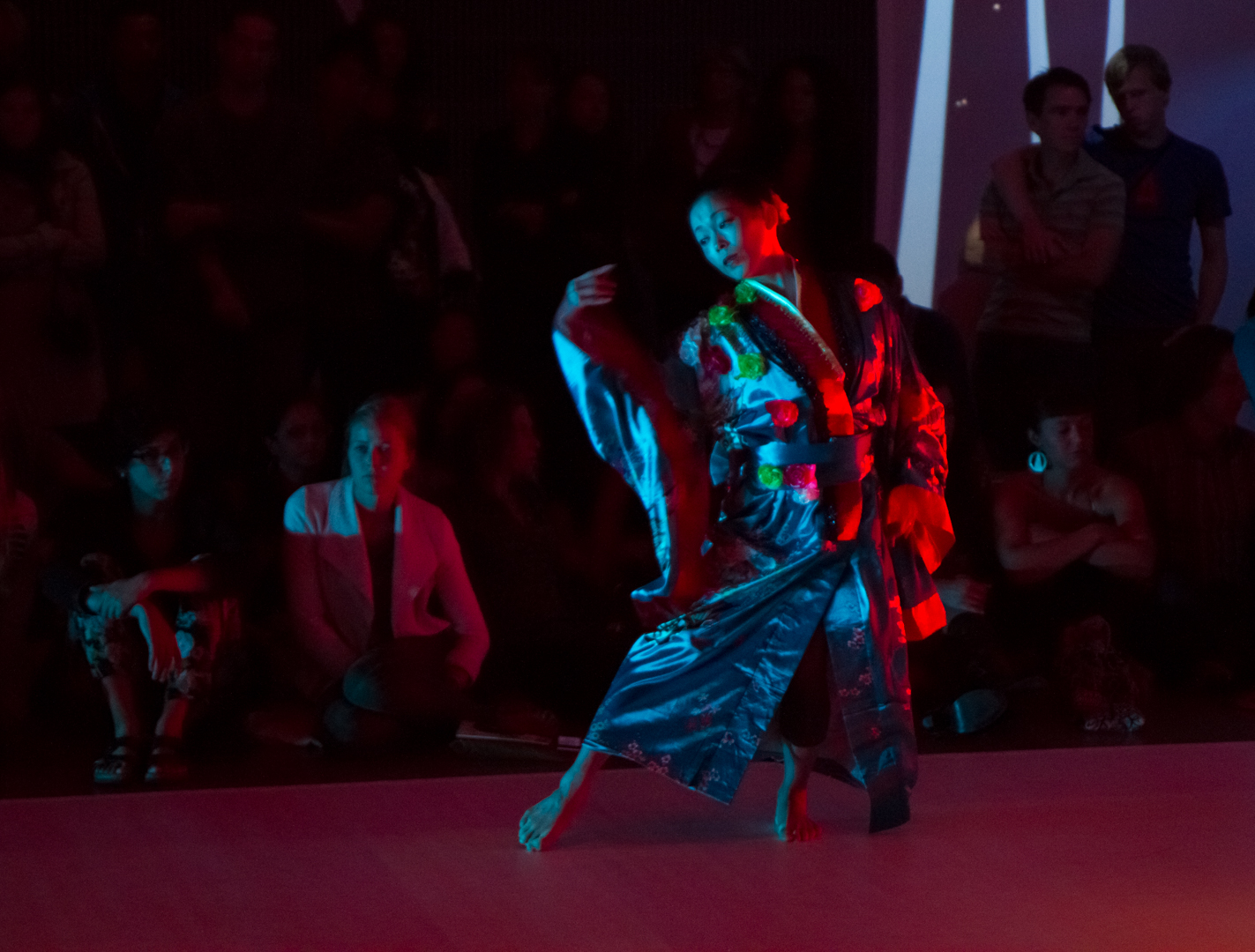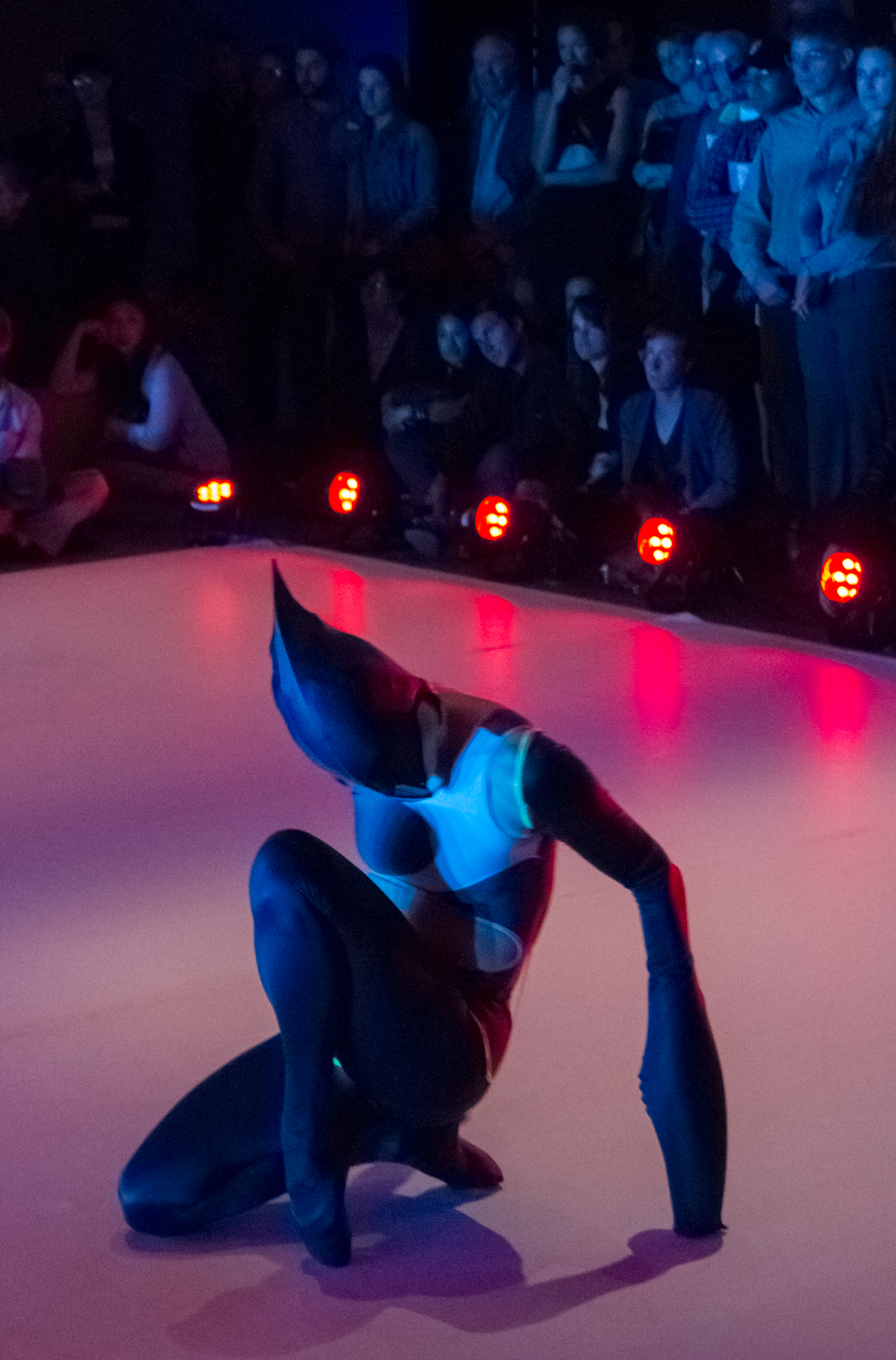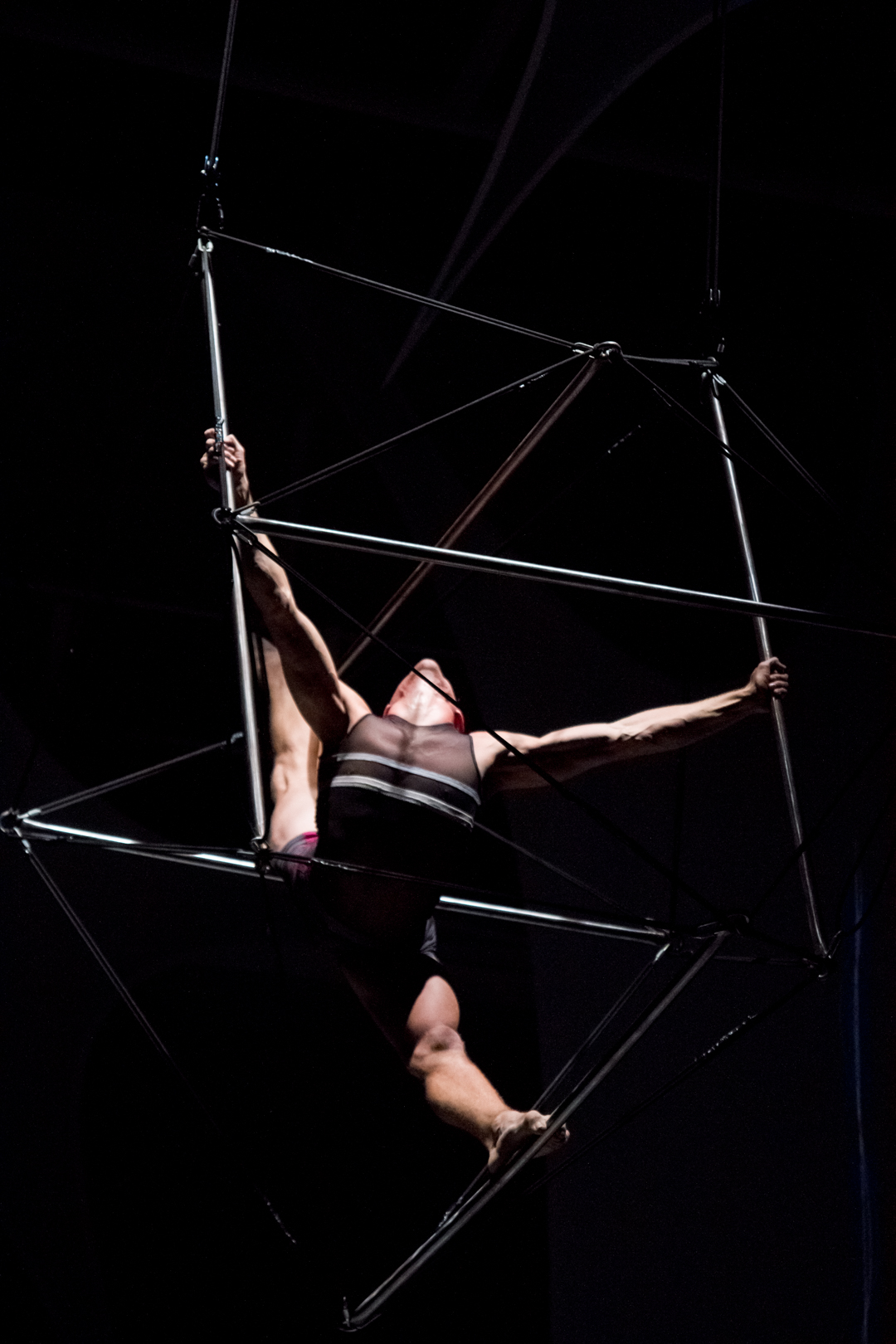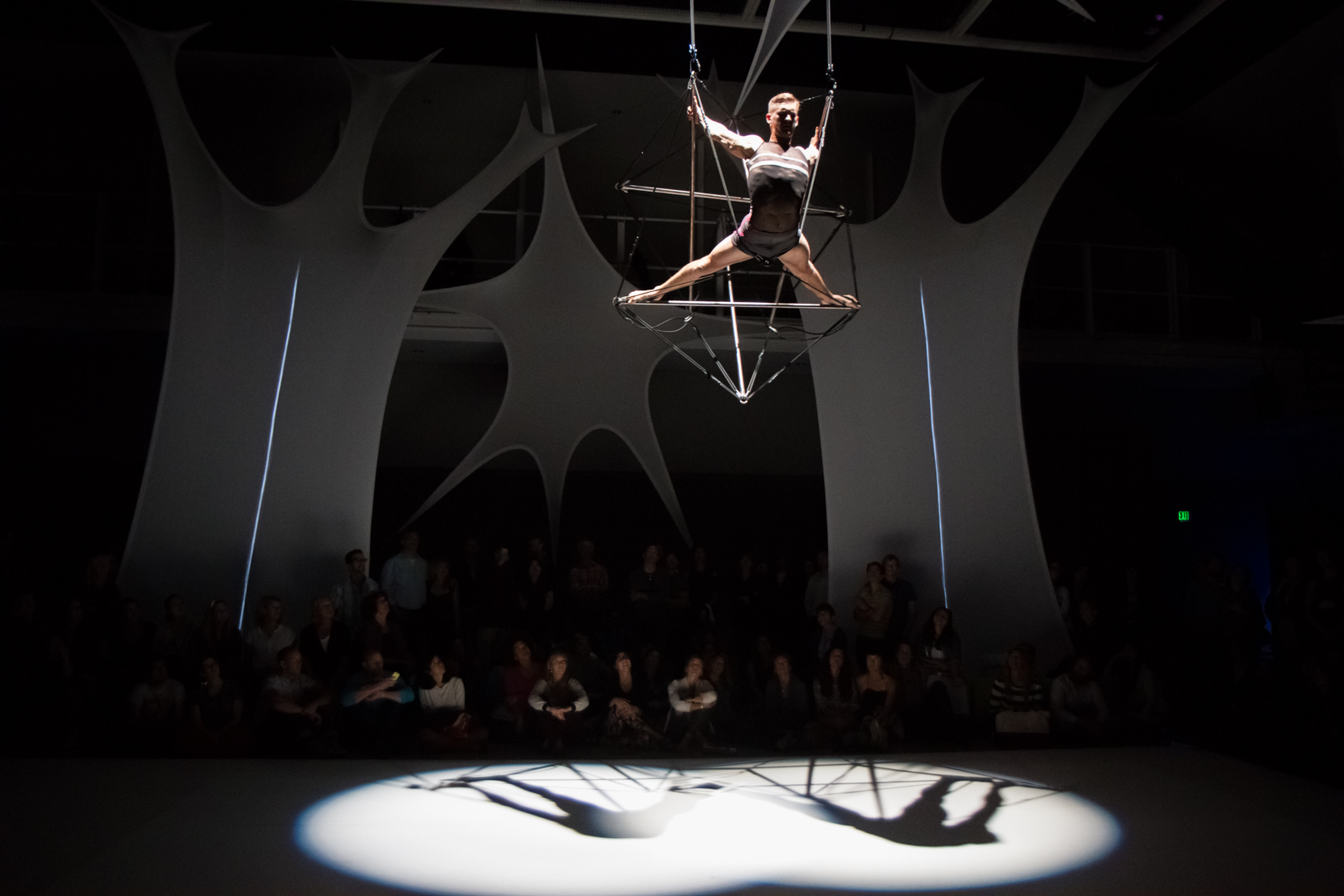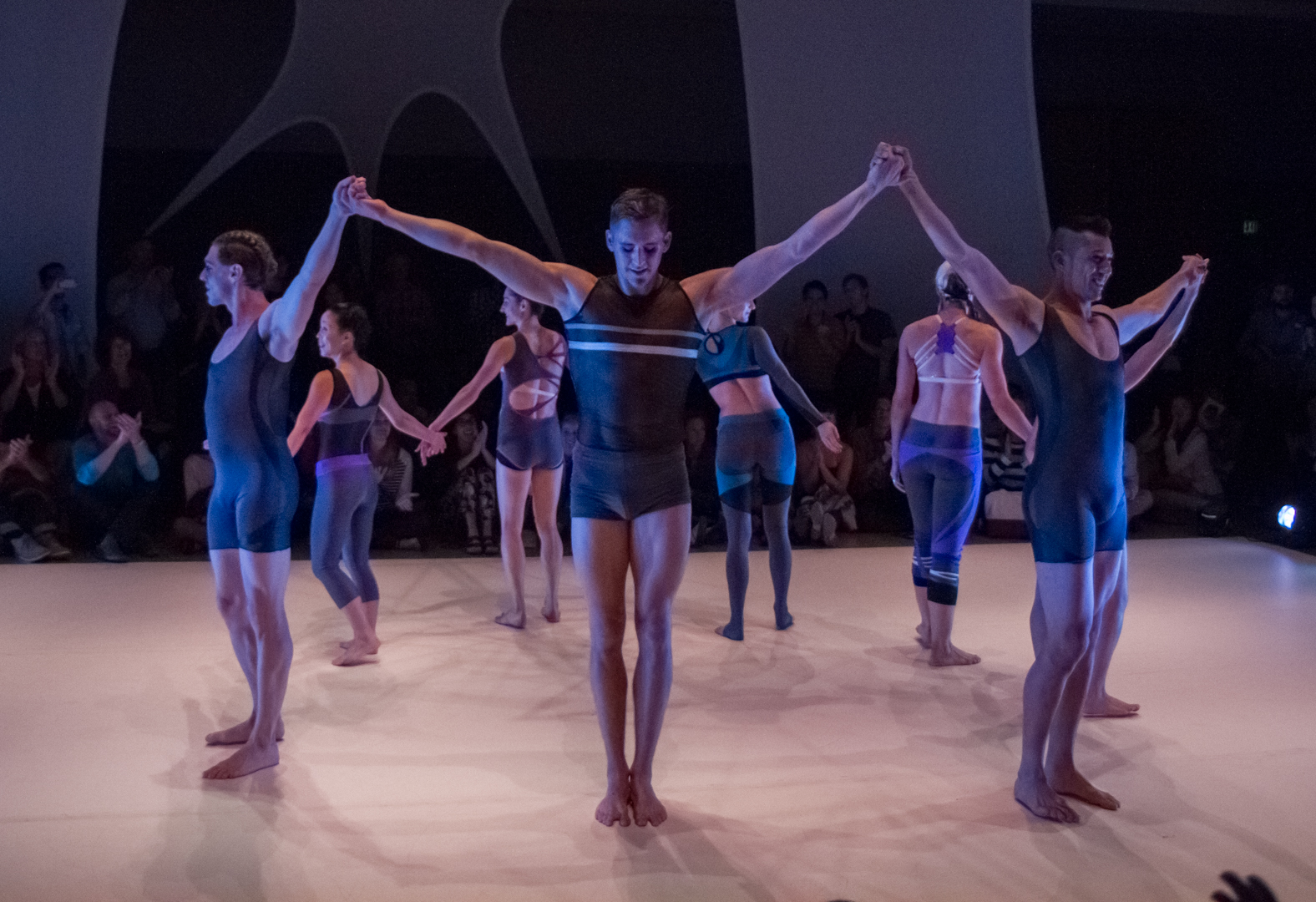SYNAPTIC MOTION (2014)
“Featuring a cast that includes two contortionists, an acrobat, a rapper and five dancers, “Synaptic Motion” makes Lomask’s brain sound like a pretty entertaining place to hang out.”
With the new developments in neuroimaging technology, can we now know what the act of creativity looks like? San Francisco’s internationally acclaimed science and technology dance company Capacitor tackles this question head-on in the world premiere of “Synaptic Motion.” Conceived and choreographed by Artistic Director Jodi Lomask, this multi-sensory experience is informed by brain scans taken at the UCSF Neuroscape Lab to capture the mind during the act of choreography.
Media collaborators John Fesenko, Mary Franck, Wesley Grubbs, and Johan Bichel Lindegaard have transformed this data and more into an immersive visualization of the creative process to the sound of Danish composer Toni Martin Dobrzanski and in a set designed by Erik Walker with lighting FX by William Brinkert. Travel through a larger-than-life neural forest experiencing memories, future self projections, and mirror neurons in action, while Capacitor’s unique cast of dancers, acrobats, contortionists and aerialists challenge notions of the creative process. Let them take you on a trip through multiple states of mind utilizing tensegrity apparatus.
“A particularly dramatic moment during the performance was when a work-specific acrobatic device was lowered from the ceiling and one of the performers climbed into it and, suspended in the air, demonstrated the concept of tensegrity—the structural principle based on the use of isolated components in compression inside a net of continuous tension.”
The Impetus
Through state-of-the-art neuroimaging technology, “Synaptic Motion” addresses the question: What does creativity look like? Not the art (the products of creativity), not the artist (the vessel of creativity), but the act (the activity in the brain that generates what we call creative work)?
Neuro-imaging, conducted by project neurologists at the UCSF Neuroscape Lab, form the basis of this inquiry. The Neuroscape Lab is specifically focused on the study of neural mechanisms of memory and attention. For the development of “Synaptic Motion,” Lead Neuroscientist Dr. Adam Gazzeley and Engineer John Fesenko used magnetic resonance imaging (MRI) to create an accurate representation of the surface anatomy of Lomask's brain, and a related procedure called diffusion tensor imaging (DTI) to capture the topology of her white matter tracts -- essentially the 3D wiring diagram of her brain. A prototype high density wireless EEG cap was then used to monitor her brain activity while planning and performing choreographed segments of this work, and mathematical models custom-created to match her detailed brain structure were used in coordination with this brain activity data to create an artistically rendered visualization of her brain activity -- the so-called "Glass Brain" technique.
Photos by Eliya Selhub
“Synaptic Motion is a much more effective and enjoyable journey to a place where the limits on the imagination don’t exist and the creative potential of the human body and spirit continues to evolve.”
The Sponsors
The creation of this work by Capacitor Performance is made possible by the Kenneth Rainin Foundation, the National Endowment for the Arts, San Francisco Hotel Tax Fund / Grants for the Arts, the San Francisco Arts Commission, The Voluntary Arts Contribution Fund, Danish Popular Authors, the Zellerbach Family Foundation, Djerassi Resident Artists Program, the SF Circus Center, the Lab, Danish Arts Foundation, and Gray Area Foundation.
“I took my company to see the premiere... They LOVED It – thought it was so thought-provoking and eerily beautiful. With the wonderful modern clown interlude doing beat-box/basketball act, that was amazing. The one that stuck most in my mind was the dancer using the large “iron weights” to iron out the floor – it reminded my group of Alzheimers, the feeling that parts of our brain are being “erased.” Truly a memorable and unique experience, thank you so much…can’t wait to see the next one!””
NEUROSCIENCE CONCEPTS
Here are some of the concepts that inspired this work. Consider them introductions.
If you find them interesting, please further your learning and dig deeper.
From the over abundance of connections you were born with, your synapses were meticulously pruned to suit what you were learning and adapt to your environment, to create the connections and order you currently use to understand your environment.
When you walked into this venue, your prefrontal cortex was busy evaluating the situation, guiding how you express your personality, deciding what you should do, and helping you behave appropriately. This is the most developed and evolved region of your brain - the control center.
Actions and perceptions involve billions of neurons interacting with one another. Your habitual action patterns are strengthened the more you use them. This is why breaking habits is hard - the synapses that form those connections have grown to be tightly bound.\
When you woke up this morning, if you gave yourself time before you had to be fully conscious, you may have noticed a creatively fertile state of mind called a hypnopompic state - a state where lingering images from your dream world reside.
90% of the people in this room used a psychoactive drug this morning. They manipulated their brain chemistry with caffeine.
If all parts of your brain began to surge with the same frequency of electrical impulse, the synchrony would overwhelm your system and you would suffer an epileptic seizure. Diversity of frequency is necessary for balance.
While watching this performance, your perception of familiar actions by the performers may activate mirror neurons in the brain when you imagine doing the act yourself.
Your amygdala drives the most powerful and rapid emotional signals in your brain, and it is the job of the prefrontal cortex to control these impulses to best achieve your goals.
Although your mind may feel static, like a constant in the changing world, your neural pathways and synapses have been adjusting to your behavior and environment your entire life. Your brain has been building your mind.
If you meditated earlier today, you probably increased your high-frequency brain waves called gamma waves. These waves are thought to network distant areas of the brain to one another and activate neural structures involved in attention and control of the autonomic nervous system (heart, lung, circulatory, etc).
When you think about someone you love, your brain releases a concoction of neurotransmitters including oxytocin, dopamine, vasopressin and adrenaline. Love is a manifestation of the mind.
When you feel expressive freedom during an improvisation, it is because you succeeded in temporarily downregulating the hyper-analytical and metacognitive processes in your brain, which can limit your ability to respond to creative challenges, making remote associations and therefore finding novel solutions.
If you got a nap or a nature walk in today, you perhaps increased your productivity, replenished your attention, solidified memories, and encouraged creativity.
When you were cleaning your house or engaged in any repetitive 'thoughtless' act, did you solve that problem that has been bugging you? It is probably because you changed the subject and your default mode network (what happens when you are daydreaming) was able to integrate a wide range of brain regions in more complex ways than when you were consciously working on the problem.
The parts of your brain that are critical for formulating daydreams, future projections, and personal memories all contribute to your creative cognition.


